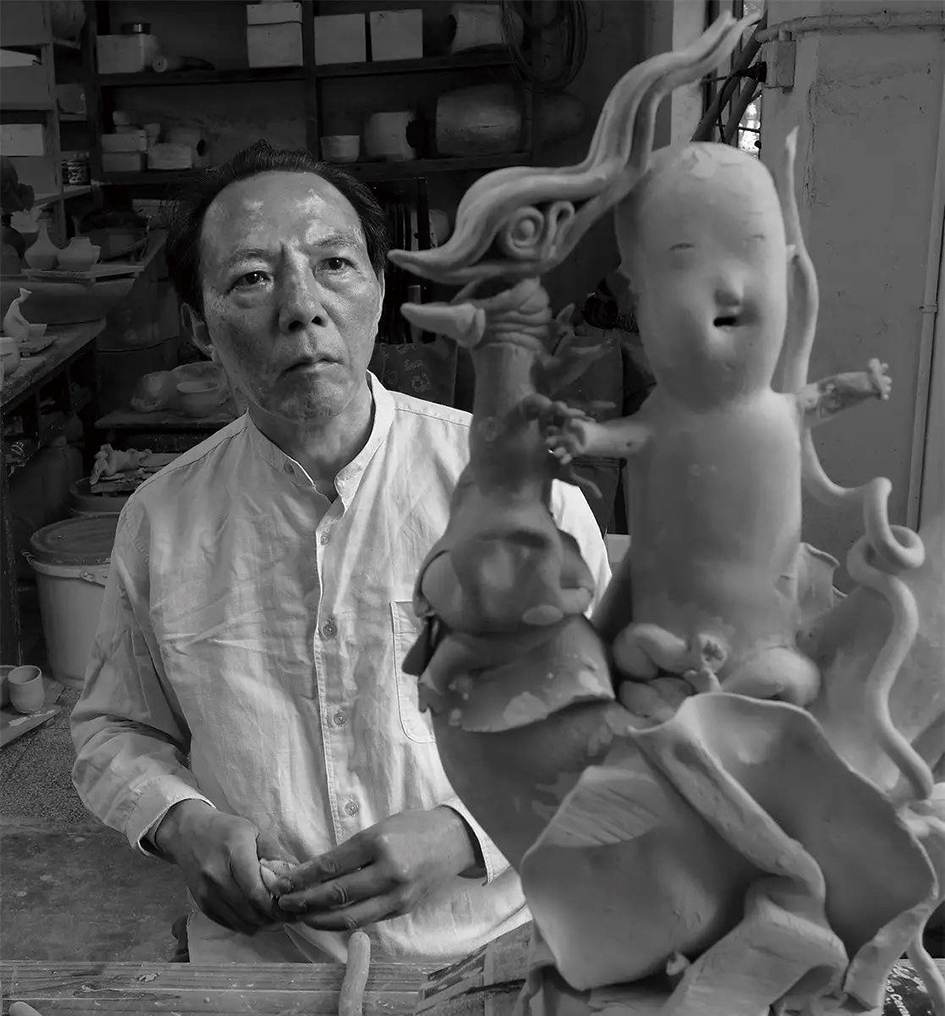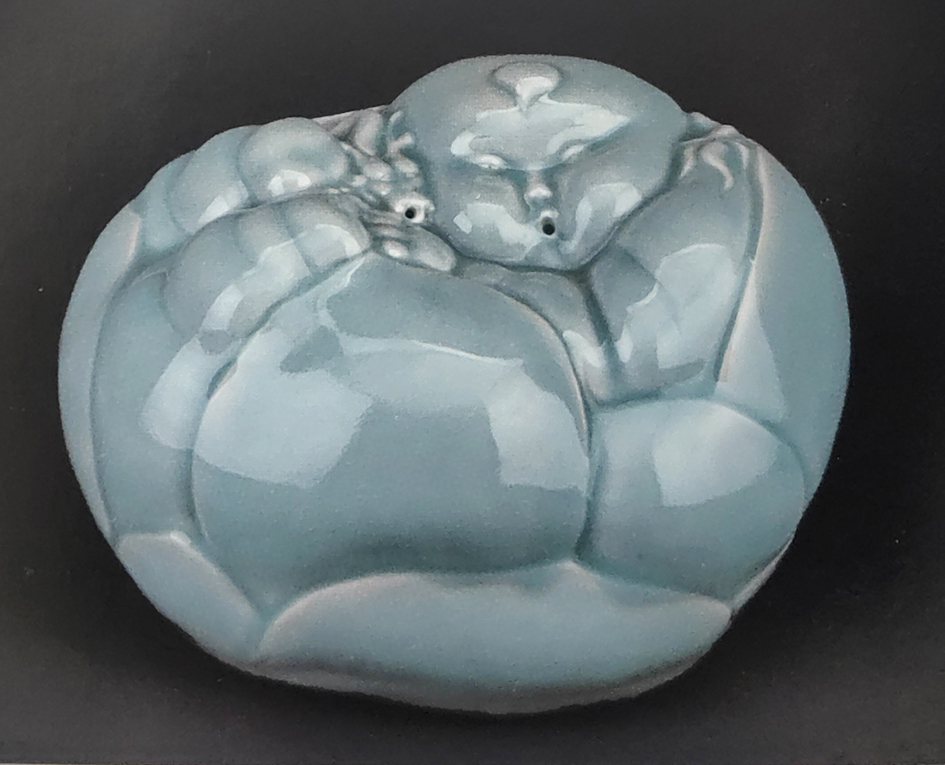
Yao Yongkang, a Chinese sculptor and ceramic artist, is a member of the International Academy of Ceramics (IAC), a member of the China Artists Association, a member of the Ceramic Art Committee of the China Artists Association, the director of the Jiangxi Sculpture Art Committee, and the president of the Jingdezhen Kaolin Ceramics Art Association. He is also an expert, receiving special government allowances from the State Council.

Mr. Yao Yongkang’s Dragon Boy stands out as a remarkable masterpiece, captivating viewers with its unique artistic charm and profound cultural depth. This artwork serves as a bridge, connecting the profound veins of ancient Chinese civilization on one end and extending to the forefront of modern ceramic art innovation on the other. It offers audiences a visual and spiritual feast that transcends time and space, while also providing profound and valuable insights into artistic creation and cultural heritage.
The shape of Dragon Boy is a wonderful mix of Eastern beauty and a boy’s image.The boy in the work, full of life and innocence, has a round and plump form with smooth lines. He is full of lively beauty, like a flower blooming in spring, giving off freshness and energy. The pouted little mouth and bright, sparkling eyes seem to hold endless curiosity and a desire to explore the world, showing the child’s innocence to the fullest.
From a technical perspective, Dragon Boy exemplifies exceptional craftsmanship. During the shaping phase, the ceramist demonstrates masterful control of clay. Building on traditional hand craftsmanship, the artist incorporates modern innovative techniques, refining and processing the work to achieve a unique texture and gloss on the clay surface. This retains pottery’s traditional simplicity while adding a modern artistic sophistication. The whole process of pottery craftsmanship not only shows respect and inheritance for traditional pottery techniques but also demonstrates innovation and integration of modern artistic concepts, fully reflecting the potter’s profound artistic skills and spirit of bold exploration.
Dragon Boy is a work with profound cultural significance. The dragon, a symbol of the Chinese nation, carries thousands of years of history and represents auspiciousness, dignity, and power. The artist skillfully integrates dragon elements into the image of a little boy, signifying the inheritance and continuity of the Chinese nation. Through this creation, the potter not only pays homage to the ancient dragon totem culture but also conveys a firm commitment to upholding and promoting the culture of the Chinese nation. The innocence, bravery, and resilience displayed by Dragon Boy reflect the Chinese national spirit in the new era, endowing the work with a strong sense of cultural identity and national pride beyond its artistic value. It has become an important medium for connecting the past and present, and for inheriting China’s excellent traditional culture.
The success of Dragon Boy highlights the significance of cultural roots for artistic creation. By deeply exploring and reinterpreting elements like the dragon totems and children’s images from Chinese culture, the artist infuses the work with a rich cultural background and unique artistic charm. This suggests that artists should explore local cultural treasures, draw inspiration from history, and create art rooted in culture to ensure its lasting vitality and wide influence. Ancient myths, traditional art forms, and unique folk customs can all inspire contemporary art and infuse it with new energy and soul.
In Dragon Boy, we see a perfect blend of traditional pottery and modern art. The artist, rooted in tradition, boldly innovated by infusing modern aesthetics and techniques to reinterpret traditional themes, retaining core traditional elements while adding contemporary flair. From traditional clay shaping and firing to modern color matching and design, the work retains pottery’s traditional charm while showing unique contemporary features. This offers a valuable lesson: tradition is art’s root, and innovation is its soul. On the path of artistic development, we should respect and inherit traditions and courageously explore new forms and techniques. This allows traditional art to thrive in modern society. Only by combining tradition and innovation can art progress and transcend in the tide of time.
Dragon Boy evokes strong emotions through its vivid imagery and profound meaning, whether through the little boy’s innocence or the dragon’s national spirit. This highlights the importance of emotional expression in art, which should convey universal emotions and values to create broad resonance. Works like Dragon Boy, rich in national cultural connotations, are highly valuable in international cultural exchanges. They showcase the unique charm of China’s excellent traditional culture to the world, enhancing its cultural influence and recognition. Given this value and impact, artists bear the responsibility of spreading culture and promoting cultural exchanges through their works. They should actively create excellent works with ethnic characteristics and the spirit of the times, contributing to the global promotion of Chinese culture.
Yao Yongkang’s Dragon Boy sets a great example for contemporary ceramics with its superb skills, profound cultural connotation, and unique artistic appeal. It is not only a splendid exploration of the aesthetic aspects of ceramics but also a profound inquiry into and response to the origins of artistic creation, pathways of inheritance and development, and the mission of cultural dissemination. In the long river of art, Dragon Boy will continue to shine its unique light, inspiring future generations to keep exploring, innovating, and moving forward on the artistic path, contributing to the prosperity and development of human art.